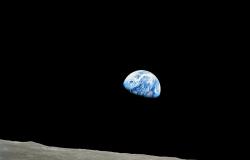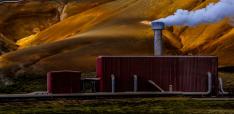Science and the Nation: What is at Stake?

Scott Montgomery on the new space race and why scientists also need to cooperate across borders to face pressing global challenges.
India congratulated itself recently for landing on the Moon and successfully sending a rover onto the lunar surface. It was scientifically significant, so merited congratulations without any doubt. Chandrayaan-3 is the first probe of the southern polar region where research suggests the greatest concentrations of water ice are to be found, a hypothesis difficult to confirm from Earth or Earth orbit since the craters in this region are heavily shadowed. Thus, again, India is fully justified in applauding its achievement, just as the global scientific community should, and mostly did, as well.
Yet, this is not why India has been celebrating. Nor is it why China’s official congratulations were small. Narendra Modi, the country’s Prime Minister, called it “a victory cry of a new India.” Whatever this might mean, it was definitely delivered on the nation’s emotional frequency: many thousands, perhaps millions, reveled in the streets, and when sampled, many chanted Bharat mata ki jai!—“victory to the motherland.” No doubt, a whiff of inebriant was added by the failure only days before of Russia’s Luna-25 attempt, the first in 47 years.
There is no specific case to be made against Indian nationalism here. The Indians are only doing what has been done since the Space Race began (it never ended). Yes, the landing is assuredly another “step for mankind,” and not a small one. It marks an inarguable advance for global science, only the fourth successful touchdown in history, and its data-gathering rover will return a trove of true intellectual riches to lunar research. Meanwhile, the line to “victory” keeps getting longer: South Korea, Japan, United Arab Emirates, Australia, Canada, as well as the U.S. and China.
The border between what belongs to science and to the state, between the purview of research and the reach of politics, and between the needs of knowledge and demands of nationhood, has been porous ever since the Scientific Revolution. Today, as the post-war international order erodes, war returns to Europe, and both global and regional powers reject peace and cooperation, that border has become a torn membrane.
I am old enough to have lived during the seed-time of the “race to space,” leading up to the Moon landing and descent to its surface by U.S. astronauts on July 16, 1969. It was a moment when the Earth held its breath. More than 650 million people, 20% of humanity, watched or listened as the first human foot touched another world. This was a moment that did supersede the “victory” of a nation—millions worldwide were enthralled, lighted by the understanding that Earth was making living contact with a different planet.
The moment was fragile. The U.S. soon took possession of the event and proclaimed its “triumph.” An American flag was planted. In the next three years, five more missions landed U.S. astronauts on the Moon. Soviet attempts to match the achievement all failed.
Yet, the USSR succeeded with its Venera program in the earliest explorations of Venus. It was from Venera 4 in 1967 that we learned Venus’ atmosphere was overwhelmingly (>96%) CO2, with very little water vapor and was subject to winds of over 200 mph. The Venera program was paralleled during the 1960s and 70s by the U.S. Mariner effort, focused on Mars.
I was a graduate student in geology at Cornell University in the late 1970s, when Carl Sagan was head of the Lab for Planetary Studies. I audited his course on planetary astronomy and didn’t miss his lectures to our department about Mars in the winter of 1976-1977. The two Viking probes had sent just back their imagery of the entire Martian surface, with highly detailed pictures of the two landing sites. The data, as Sagan put it, was still warm from its transmission to Earth. What he showed set fire to the geological imagination. He had done his homework: his key guide to interpretating Martian geology was none other than the classic 1941 text by Ralph Bagnold, Physics of Blown Sand and Desert Dunes, a work that helped give the British army an edge over Rommel in the battles for North Africa.
Sagan became the strongest voice in the post-WWII era to defend science from what he considered to be its main enemies. In 1981, he published The Demon-Haunted World, a work that was widely believed to be a manual on scientific thinking but, in fact, counted more as an attack on supernaturalism, conspiracy belief, and religious fundamentalism.
In one of his lectures, he expressed the hope that Soviet scientists would be allowed to publish all data from the Venera missions. He had a depth of respect for Russian astronomers and physicists, given the political system controlling their work and lives. What he may not have known was the true and tragic extent of permanent damage that system had brought to most fields of science. I encountered strong hints of this, by accident as it were, during the months when Viking 1 was under way to Mars.
That fall, I was immersed in books and papers related to plate tectonics. Recommended was a volume by the senior Russian geoscientist, Vladimir Belousov. It proved, as promised, an “alternative view.” Belousov utterly rejected any horizontal movements in the Earth’s crust. By his reckoning, major mountain belts, like the Alps or Himalayas, were produced by vertical motions, which discounted libraries of evidence to the contrary. His ideas forbade a theory like Plate Tectonics as impossible fantasy.
He stood, however, at the very top of Soviet geoscience. As I’ve learned while researching a new book, Belousov was an excellent geoscientist, highly productive in a number of fields, whose work, useful to the regime, had helped protect him from Stalin’s purges of the late 1920s, 30s and 40s. Belousov’s ideas rejecting western, “mobilist” concepts, proposed a purely Soviet “geology.” This undoubtedly pleased Stalin, who intended to eliminate scientists who had spent time training abroad and embraced “cosmopolitan” science. Large portions of the research community were eviscerated, from psychiatry to mathematics, and favored voices like Belousov given huge authority. Long after Stalin died in 1953, Soviet geoscience remained isolated. Only with Belousov’s own passing in 1990 and that of the USSR itself a year later did modern geoscience truly begin in Russia.
There are two fateful realities that emerge from this—fateful, but not necessarily final. The first is that religious and other beliefs in the supernatural have never been the true death enemies of modern science. That role belongs to authoritarian regimes. They have murdered immensely more researchers, imprisoned a still greater number, repressed the teaching and learning of science, and thus held back its ultimate progress far more than all other antagonists combined. Examples are not few: Spain under Franco, Germany and Italy under fascism, Stalinist-Leninist Russia, Maoist China, ultra-militarist Japan, Castro’s Cuba. What of today? Authoritarian repression of science today is openly evident where freedom of thought is itself under dark skies—Iran, Russia, Turkey, Egypt, Pakistan, Bangladesh, North Korea, with problems now apparent in China, India, Indonesia, and elsewhere. The rise in global autocracy and the loss of international order are not happy signs for the future of science.
The second reality arrives in the form of a question: What has been wasted and lost by the intellectual injuries suffered at the hands of despotism? In other words, what level of scientific knowledge might the world possess today if such damage had never occurred, if just Russia and China had become bulwarks of research in the early post-WWII era, fully engaged with the world’s scientific community? And also: how much might be lost to a future where authoritarian states abound?
A different future may be possible. It remains conceivable that ever-more dire impacts of climate change will force a greater unity of purpose among world powers, urged on by a global scientific community whose consensus is stronger than ever about what is happening and why. Whether this community will remain like a commonwealth, an alternative to the landscape of fraying geopolitics, is perhaps more important than we realize. This year, 2023, saw fire and flood devastation, unprecedented temperatures, and overheated ocean waters spread across the Earth. For an expanding portion of the globe, future survival will depend on well-sealed structures with an artificial climate. This should sound familiar. It is the same that is needed for humans to live on a “hostile” planet like the Moon or Mars.
Photo by Pixabay


